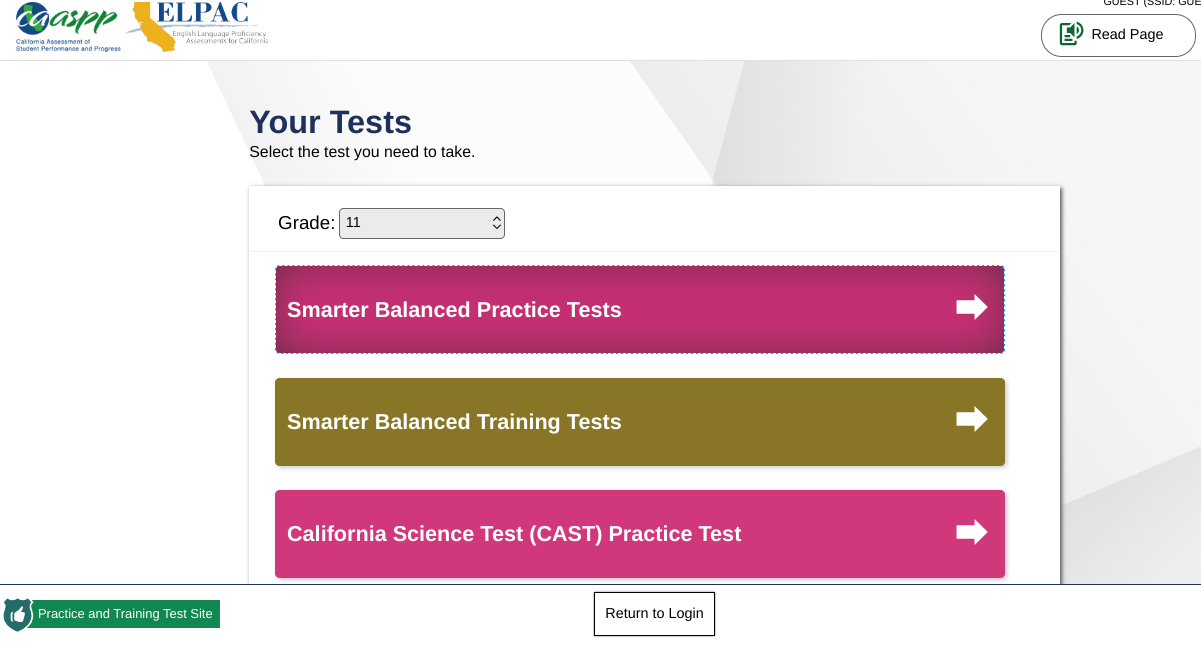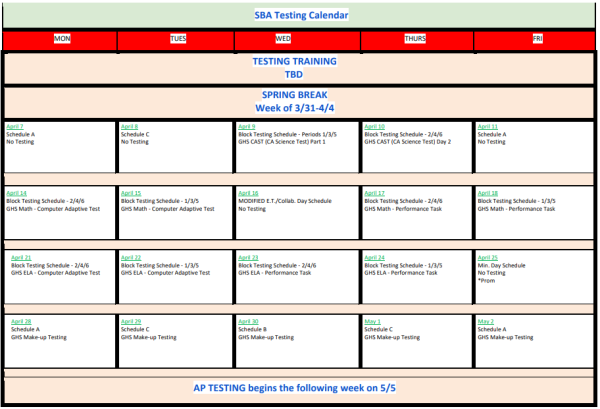
Screenshot of the CAASPP practice tests
Administrators at Gabrielino High School are implementing significant changes to the testing schedule, moving students to test with their subject-area teachers during California Assessment of Student Performance and Progress (CAASPP) testing in April.
The changes are as follows:
Juniors will take the math, English, and science portions of the CAASPP in math, English and science classes, preferably with their teachers for the respective subject.
This will occur in two-hour block days (alternating between periods 2/4/6 and 1/3/5), which are standard for this time of year to give students enough time to test.
Non-testers will be consolidated to other block periods and other juniors will be moved to ensure full periods of test-takers.
Students will receive schedule cards at the beginning of April, containing students’ testing information and Statewide Student Identifier (SSID).
The schedule is linked below:

“The district wanted [students] to test with [their] teacher or with someone in that department,” Assistant Principal Kevin Murchie explained, who is in charge of state testing. “Studies have shown that kids will perform better on these types of tests if they’re with an instructor they respect.”
More broadly, the shift is in line with the Multi-Tier System of Support (MTSS) for San Gabriel Unified School District (SGUSD), meant to nurture student-teacher connections and give students the support they need.
Yet the motivation to put students with their teachers during testing has created numerous logistical problems for Murchie and other administrators. The guidelines laid out are full of exceptions, such as for students with multiple math and science classes or none at all.
The longer block periods are often useful for many teachers and enjoyed by some students who are able to “get more work done.” While Tom Velekei, science teacher and head of the science department, found few problems with the schedule, he noted the inherent inconvenience of moving students around, given the mix of seniors and juniors in many classes.
“These other kids are not taking the test, and what kinds of distractions would there be, right? So that meant we had to move non-test-takers someplace,” Murchie emphasized.
Murchie explained how juniors from several classes had to be pulled together to form one complete period of testers. Several juniors from English 3, AP Physics, and Peer Helping had to be moved with the 28 juniors to another class for testing.
“And then all those students that are not [taking the test], we have to take and put them in Ms. Leyda’s room,” Murchie continued.
Creating and organizing this schedule has taken up much of Murchie’s time over the past few months, speaking with members at the district office, department chairs, and Principal Vince Lopez to finalize the current schedule.
Heather Wolpert-Gawron, head of testing for SGUSD, explained that from 3rd to 8th grade, students tested with their teachers. The current changes are meant to extend that support to high school students under MTSS and “respond to how kids build relationships with adults.”
Such a framework only began development at the district in 2019 and has gradually made its way up through the elementary schools to Gabrielino.
Overall, Murchie and other administrators feel hopeful about these new changes, underscoring the importance of state testing and the desire for students to do well.
“Be patient on testing day,” Murchie concluded. “Make sure you get rest and you eat breakfast. Make sure you’re in the proper frame of mind to come to school and just do the best you can that day.”
With state testing weeks away, it marks the culmination of a year of academic instruction. Administrators have worked hard to ensure students will feel comfortable and ready.